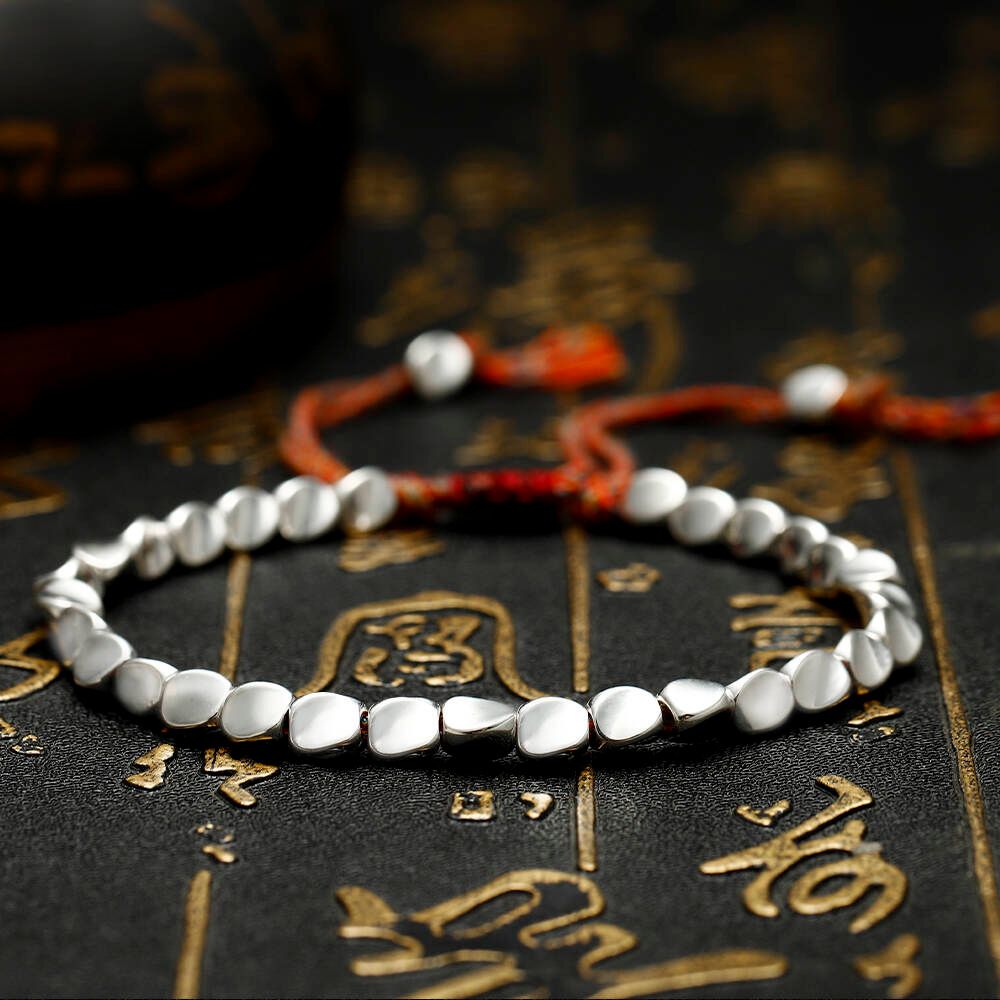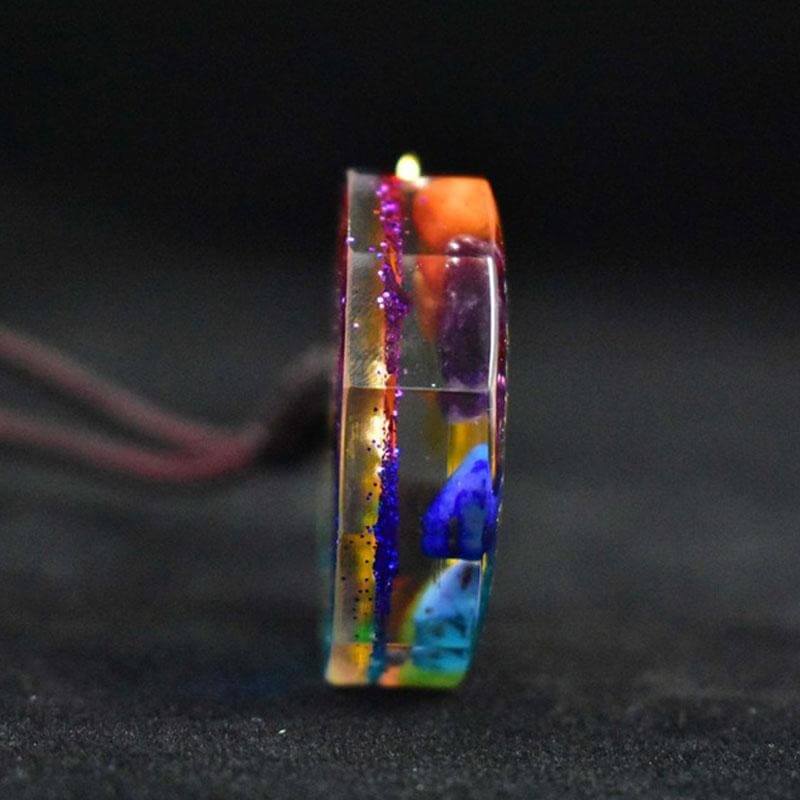In the fascinating world of gemstones and jewelry, lava beads hold a unique place. Sourced from the very heart of the earth, these beads are not just aesthetically pleasing but are also believed to embody grounding and calming properties, making them a sought-after element in the realm of healing and fashion jewelry.
However, the rise in their popularity has led to an influx of imitations in the market. Understanding how to identify genuine lava stones is crucial for ensuring quality, value, and the integrity of the lava stone bracelet benefits.
In this post, we'll explore simple yet effective ways to distinguish real lava beads from fakes, empowering you to make informed choices in your jewelry selections. Let's uncover the truth behind these earthly treasures!
In this article
Lava beads have become a favorite among jewelry lovers, spiritual seekers, and aromatherapy enthusiasts. Their unique, porous texture makes them not only visually striking but also functional, as they can hold essential oils for hours of wear. However, with their rising popularity, fake versions flood the market, leaving many wondering: how can you tell if your lava beads are authentic?
In this guide, we’ll walk you through the characteristics of real lava rock, how to spot imitations, and why authenticity matters for both energy work and personal style.
What is Lava Rock?
Lava rock, also called volcanic rock or basalt, forms when molten lava cools and solidifies after a volcanic eruption. It has a porous texture, lightweight feel, and natural matte appearance. Beyond its geological origins, real lava rock is believed to carry grounding energy, helping wearers connect with the Earth’s stabilizing force.
Explore our Lava Stone Bracelets that harness the natural power of authentic volcanic rock.
Why Authenticity Matters
Choosing authentic lava beads ensures you experience their full benefits. Fake versions may look convincing but lack the energetic properties found in genuine volcanic stones. Real lava rock promotes emotional balance, grounding, and strength, while imitations are simply decorative.
For example, wearing healing stone bracelets with real volcanic beads can enhance meditation, mindfulness, and overall well-being.
Key Features of Real Lava Rock
Here are the main characteristics to look for when determining if your lava beads are genuine:
1. Porous Surface
Authentic lava beads have a naturally porous and uneven texture. They should feel rough, with tiny holes created by gas bubbles escaping during volcanic activity.
2. Lightweight Feel
Despite their size, real lava rock beads are surprisingly lightweight. If your beads feel heavy and solid, they may be glass or resin imitations.
3. Matte Appearance
True volcanic rock beads have a matte, earthy finish. If the beads are glossy or shiny, they’ve likely been coated or made from synthetic materials.
4. Temperature Sensitivity
Real lava rock doesn’t retain heat or cold for long. Place the bead in your hand — if it quickly matches your skin temperature, it’s a good sign of authenticity.
5. Natural Variations
No two lava beads are exactly the same. Look for small imperfections, irregular holes, and unique surface patterns.
See our guide on crystal authenticity to learn how to spot real vs fake stones.
Common Types of Fake Lava Beads
Unfortunately, many fake beads look similar to the real thing. Here’s what they’re often made of:
-
Glass beads – heavier, smoother, and too perfect in appearance.
-
Resin or plastic beads – lighter than real lava rock but unnaturally shiny.
-
Dyed or coated beads – sometimes real volcanic beads are dyed unnatural colors or covered in gloss, reducing their natural energy flow.
Always check your supplier. Trusted stores like Buddha & Karma specialize in authentic gemstone and crystal jewelry.
How to Test if Lava Beads Are Real
If you’re still unsure, try these simple tests:
1. Scratch Test
Gently scratch the bead with your fingernail or a pin. Real lava rock will not scratch easily, while resin or plastic will show marks.
2. Water Test
Place a bead in water. Real lava rock will release small bubbles as air escapes from its porous structure. Fake beads remain unaffected.
3. Essential Oil Absorption
Add a drop of essential oil. Authentic lava beads absorb and slowly release the scent, while glass or resin will not.
Discover lava stone aromatherapy bracelets designed for essential oil use.
Benefits of Real Lava Rock
Beyond appearance, the real power of lava beads lies in their spiritual and emotional benefits:
-
Grounding: Connects you to the Earth’s stabilizing energies.
-
Strength: Encourages resilience during challenges.
-
Calmness: Helps release pent-up emotions and stress.
-
Energy Balance: Promotes a steady flow of chi (life force).
When combined with other healing stones, real lava rock amplifies their metaphysical properties, making it a favorite base stone in Feng Shui jewelry.
Choosing Authentic Lava Beads
When shopping for jewelry, keep these tips in mind:
- Buy from reputable sellers who specialize in natural stones.
- Avoid overly polished or shiny beads.
- Check for natural imperfections and porous texture.
- Ask for certification or guarantees of authenticity.
At Buddha & Karma, every piece is designed with genuine crystals and stones to ensure you receive the full energetic benefits.
FAQs about Real Lava Rock
Q: Can fake lava beads still hold essential oils?
A: Some synthetic beads are designed to mimic porosity, but they don’t absorb oils as effectively as real lava rock.
Q: Are colored lava beads fake?
A: Not always. Some are genuine but dyed. However, dyeing can interfere with the stone’s natural vibrations.
Q: How long do real lava beads last?
A: With proper care, authentic lava beads can last a lifetime, making them a sustainable choice for jewelry.
Q: Do lava beads need cleansing?
A: Yes, like all crystals, real lava rock should be cleansed regularly to remove absorbed energies.
Learn crystal cleansing methods here.
Final Thoughts
When buying lava jewelry, knowing how to spot authenticity is key. From its porous texture and lightweight feel to its energy-enhancing properties, real lava rock offers much more than aesthetics. Whether you’re drawn to it for style, grounding, or aromatherapy, always choose genuine beads for the best results.
Browse our collection of authentic lava stone bracelets to experience the power of volcanic energy firsthand.














Leave a comment